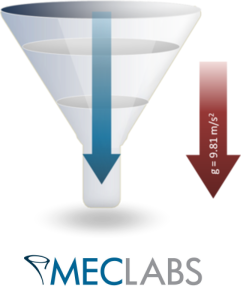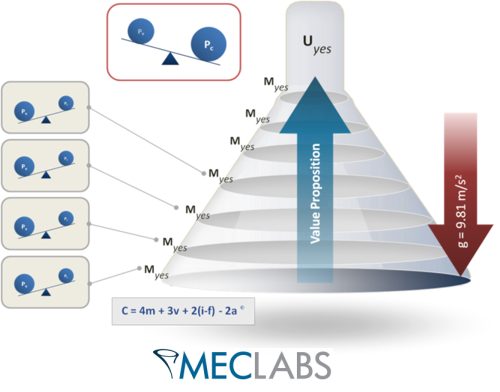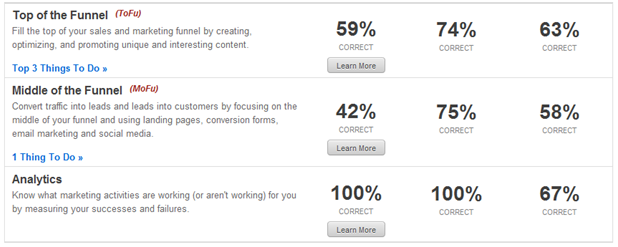On the MarketingExperiments blog, we often write about landing page optimization and email optimization. And, while optimizing these channels can have an outsized impact on your results, you sometimes need to take a step back and look at your marketing campaign, even your sales-marketing organization, as a whole.
So, with the new fiscal year right around the corner, grab every smart person you work with (yes, even those that work in Sales), throw them in a room for an hour (bring some eggnog, it will help the festive brainstorming), and ask these three questions about your current sales and marketing funnel:
Question #1: Do we have the right “ask” at every stage of the funnel?
The picture we have in our minds of a funnel is so pretty, isn’t it? A big, wide mouth at the top for all those leads to fall into, and then, they nicely fall down the path to closed deal. But is it really so easy?
Flint McGlaughlin, Managing Director, MECLABS, wants you to question the very way you look at the funnel. “People don’t fall into the funnel; they fall out. Gravity does not work for the marketer. It works against the marketer,” Flint says.
So, what frame of reference can help you as you optimize your funnel? Perhaps a tower.
“The prospect climbs it, and the force which ATTRACTS the prospect upward is the force of the value proposition,” Flint says.
At every stage of the funnel, the prospect must make a decision, and will only say “yes” (essentially, a “micro yes” leading up to the ultimate “yes” of a purchase) if the perceived value outweighs the perceived cost. And, of course, it only takes one “no” to halt the entire process.
Here are five examples of what can cause that “no”:
- An “ask” to the wrong person
- An “ask” without sufficient value force
- An “ask” with too much cost force
- An “ask” that is premature (in the thought sequence)
- An “ask” for too much
Question #2: Do we have the most valuable content at every stage of the funnel?
Relevance. As we all know, that is the magic word for marketing and content. As my old boss used to say, “There may be an ad for a refrigerator on page A2 of the newspaper every day, but the only day you’ll notice it is when your fridge breaks.”
Of course, with digital marketing, we no longer have the luxury of mass media newspaper ads that happen to hit a very small section of a very broad audience at just the right time. Digital marketing has become narrowcasting, sending micro-messages to niche audiences.
Because of this, your potential customers expect a conversation, and will only engage with you when it matters to them – like when your content hits them right between the eyes becauseit reaches them with helpful information when they are at the exact moment in the buying decision to need that specific help.
Let’s take email as an example. In the MarketingSherpa Special Report Five Steps to Stronger Email Relationships: Research-based tactics SMBs can apply for more active and engaged subscribers (a free report until Dec. 31, courtesy of AWeber Communications), lead author W. Jeffrey Rice, Senior Research Analyst, MECLABS, found that “Another strategy SMBs find very effective is producing content for each funnel stage, and segmenting email campaigns based on their location in the sales cycle.”
The below research from that report illustrates Jeff’s point:

As you can see from Jeff’s survey of 2,735 marketers, for both medium and small companies (basically, any company with fewer than 1,000 employees), producing content for each funnel stage was the absolute most effective email engagement and relevancy tactic.
For large companies, the most effective tactic was to “automatically send email based on triggers.” Of course, it should be noted that many triggered emails can be tied to steps in the funnel as well, such as a white paper download or webinar attendance.
Keep in mind, much with the “asks” in the first question, any content that is premature in the thought sequence is more likely to drive prospects out of your funnel tower instead of up it.
Question #3: Do we have the blocking and tackling right?
On the flip side of the above two questions, danger lies in focusing too much on your overall lead nurturing content plan and calls-to-action at each step of the funnel. Doing so could cause you to overlook the basic blocking and tackling, the infrastructure fundamentals that serve as a foundation for all the hard work you’re engaged in powering prospects up your funnel.
As an extreme example, if you have the wrong phone number in your call-to-action, the best content in the world that drives prospects to the most optimized CTA will not do you any good.
One check and balance in your marketing campaign that helps is a good QA process before anything goes live.
Another thing that may be worthwhile before you kickoff FY2012 with a bang is a deep funnel audit. For example:
- For the triggered email you set and forget nine months ago, is the content still relevant?
- Has there been an update to a platform you use (e.g., LinkedIn, Twitter, WordPress) that has hurt some functionality you relied on?
- Are there simply new people in new roles that aren’t familiar with specific steps in your funnel (e.g., could a new sales rep be sending the wrong content at a specific step of the funnel)?
A nifty, free tool to help your funnel audit is HubSpot’s new Marketing Grader, which can give you a good, basic analysis.
Of course, unless you’re George Jetson, there’s much more to your job than simply pushing a button. True funnel optimization requires a dedicated mix of strategic thinking and execution. But the above tool, and hopefully this entire blog post, can hopefully begin you down to the path to an optimized 2012.
Related Resources:
Marketing Funnel: How to optimize your Sales and Marketing funnel in 5 steps
B2B Marketing: Top “Aha moments” of 2011 from your peers
B2B Funnel Optimization: What happens after you capture the lead?
Landing Page Optimization: Test ideas for a B2B lead capture page







I love looking at the Marketing-Sales tunnel inverted. Strategizing every step of the prospect-to-customer process is a sure-fire way to making the most of your marketing efforts. Well written, good resources. Thanks so much for posting such an informative article.
Daniel – Very insightful post. I suggest extending the use of good content to the sales team really helps the joint efforts -marketing, sales and the prospect to reach a successful outcome. While marketing automation helps to infer what is right, educating the sales team on which assets to use at what times carries the overall concept from initial engagement to close. This is one simple way to align sales and marketing.
Bravo. In all my years of sales and marketing, I always knew the funnel was just too simplistic and that “gravity” was against me… In today’s eEconomies of scale, the funnel “ladder” model is the defacto standard of explanation of what we are up against and the shifting paradigms of getting to each stage with a “micro yes”. Then and only then can our leads climb and be “pulled” upwards and onwards onto the great summit of Mt. Closethesale!
Wonderful insights, Daniel. I plan to use this with the marketing and sales team. Too often there is a disconnect between us. And too often the message is about price and not the value proposition. This should help both understand what we are trying to achieve.